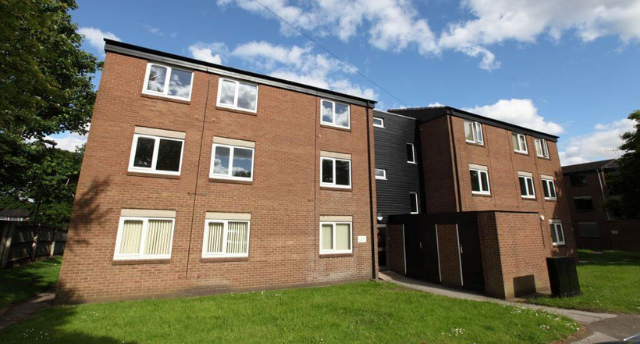
How can the Living Rent model enable young people to Live, Work, Earn and Learn?
Jean Templeton is the Chief Executive of youth homelessness charity St Basils.
With youth unemployment at record levels, never has it been more important to provide a housing offer which enables young people to live, work, earn and learn. Too often, they are trapped in high rents, requiring dual navigation of the benefit system alongside entry level work or apprenticeship wages. Often the complexity means that work loses out to the greater fear of losing critical benefits.
St Basils’ Live and Work model has tested a ground-breaking approach to providing accommodation which underpins young people’s entry into and sustainment of employment.
The partnership approach to phase one focussed on a shared objective of providing young people, who have been homeless or at risk of homelessness, with safe, affordable accommodation without recourse to the benefit system, and a route into employment via apprenticeships. Rents were deflated below benefit triggers so that young people were able to live and work and be benefit free.
The scheme has received national recognition, winning the ‘Outstanding Contribution to Homelessness’ category in the National Housing Awards 2018 and ‘Homelessness Partnership of the Year’ in the 2020 UK National Housing Awards.
From St Basils’ perspective, the scheme extended our options for young people without family support, enabling them to benefit from similar opportunities to their contemporaries, who do have such support. From our partner, Sandwell and West Birmingham NHS Trust’s perspective, as an employer and community investor, the scheme has contributed to achievement of a younger and more diverse workforce. It has also supported staff development in understanding what relational skills are required to achieve inclusion.
Some 115 young people have lived in the scheme since it opened in 2015, all overcoming difficult starts, some with multiple needs and all with the trauma of the underlying issues which lead to homelessness. None have returned as homeless. Over 30 young people have secured permanent employment following their NHS apprenticeships and 3 are currently undertaking higher education to become registered healthcare practitioners. As access to the apprenticeship scheme has changed, we have also been able to test out inclusion of young workers from diverse employment backgrounds within the scheme.
The independent evaluation of the scheme has shown the significant savings to the public purse over time: £14 return to the public purse for every £1 invested over 10 years.
We are now focussing on a second phase, an ambitious youth village, utilising a further three blocks of former Health workers’ accommodation for conversion to 54 self-contained units for young workers.
Our ambition is to have a scheme which covers operating costs and adheres to a model of truly affordable accommodation linked to young people’s earnings. Ideally enabling young people to remain benefit-free.
Commonweal generously funded a review by Savills of a ‘Living Rent’ model to ascertain whether this approach could achieve the scheme’s objectives and remain financially viable.
Living rent setting can be specific to individuals or based on a population cohort.
The review looked at the various measures of affordability for the tenants, ensuring rent was calculated by an assessment of the tenant’s income and hence ability to pay.
The review looked in depth at four affordability mechanisms and the relationship with rents for the proposed scheme, as well as budgeted running costs. It also looked at the relationship with average earned income for young people and the combination of income levels required by young people if the rental income were to make the project financially viable. Three income bands were modelled to include average earnings of £8.20ph, £10ph and £12ph.
The modelling work illustrated the critical relationship between the living rent models, residual income for tenants and the financial viability of the Project. It also considered fairness and equity in relation to rent contribution and the impact of welfare entitlements should a young person be unemployed for a period of time or have lower income than Living wage. There could be a challenging balancing act required between total income needed for financial viability, and the mix of different tenants in different circumstances paying different rents – potentially fluctuating from month to month.
The detailed review has provided St Basils with the clearest possible comparisons to inform a decision as to whether a Living Rent model enables running costs to be met whilst negating the need for young people to dual navigate the benefit system whilst working. A decision has not yet been reached as to whether this is a reasonable means of progressing, largely because it may distort the percentage of young people we would need to attract on higher income levels and raise their rent level above affordable rent levels. This would not be in keeping with the purpose of the scheme.
The review has provided the most insightful review of a living rent model that we’ve seen and contributes significantly to our understanding and decision making and we are very grateful to Commonweal for funding the work.
Tagged:
